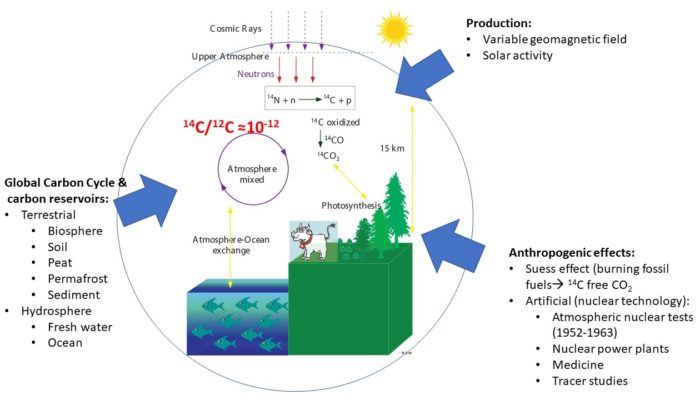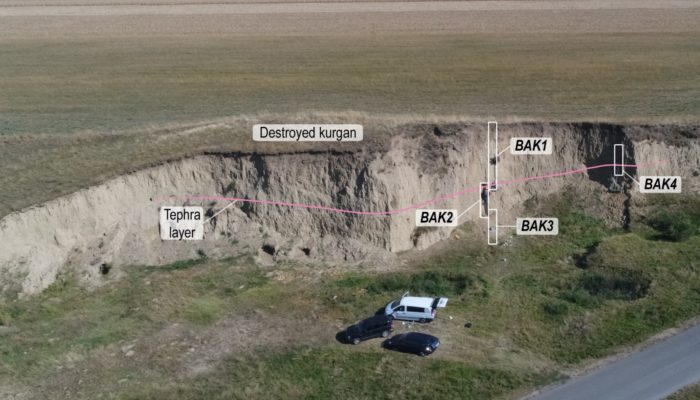1950 CE is known as the year zero in the so-called ‘BP time scale.’ The BP stands for, “Before Present,” and has its roots in the development and conventions of radiocarbon dating [1]. The radioactive isotope of carbon (14C) with a half-life of 5700 years [2; 3] is a cosmogenic isotope produced in the atmosphere by secondary cosmic rays (SCR). Thermal neutrons, the SCR particle responsible for the ...[Read More]
Bomb 14C – a tracer and time marker of the mid-20th century

Figure 1. Radiocarbon production and three main drivers of the variable atmospheric 14C content (modified figure [4]).

